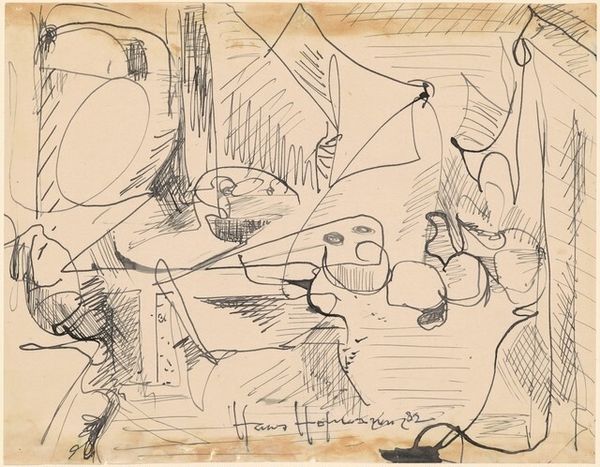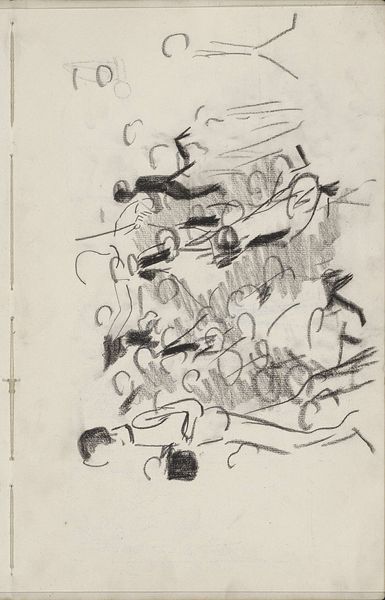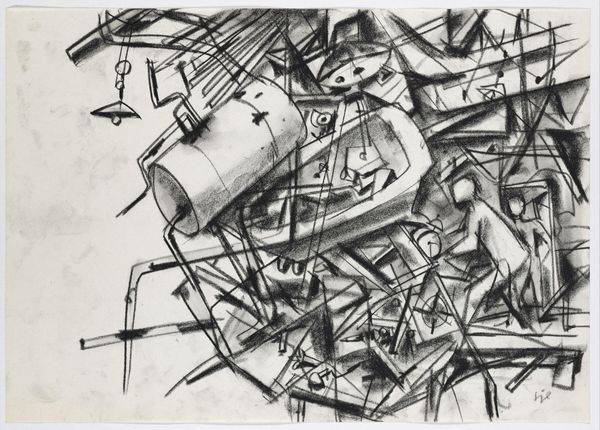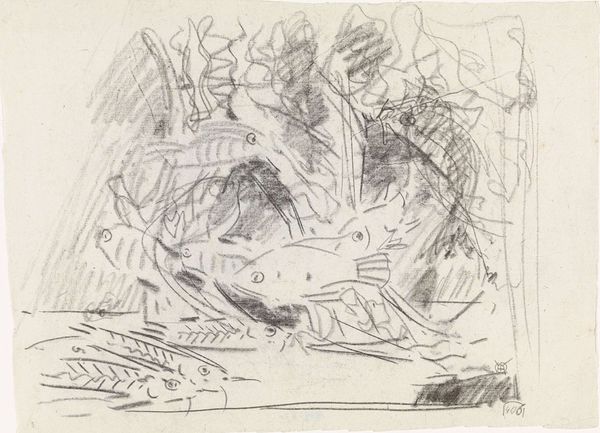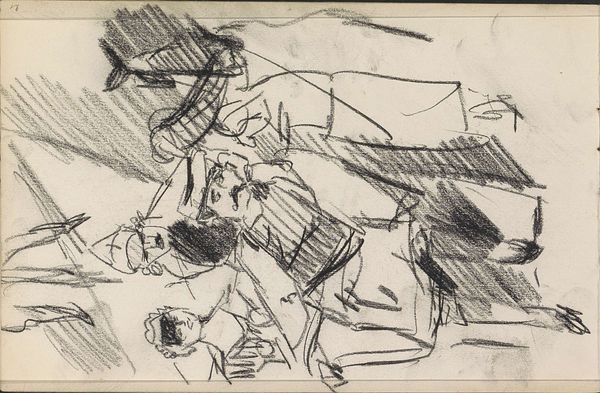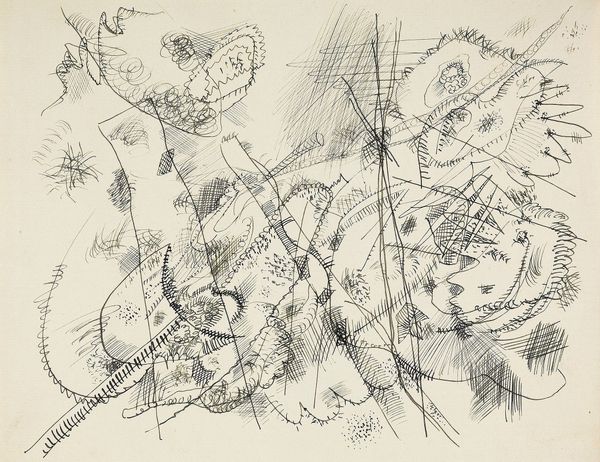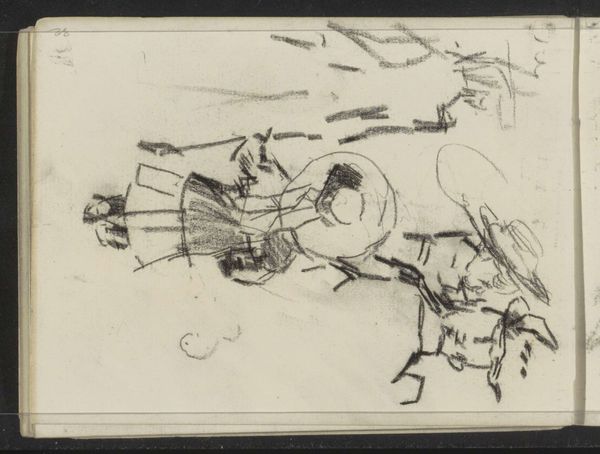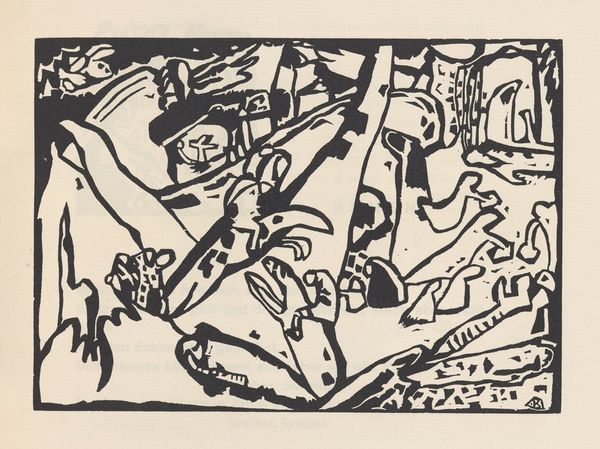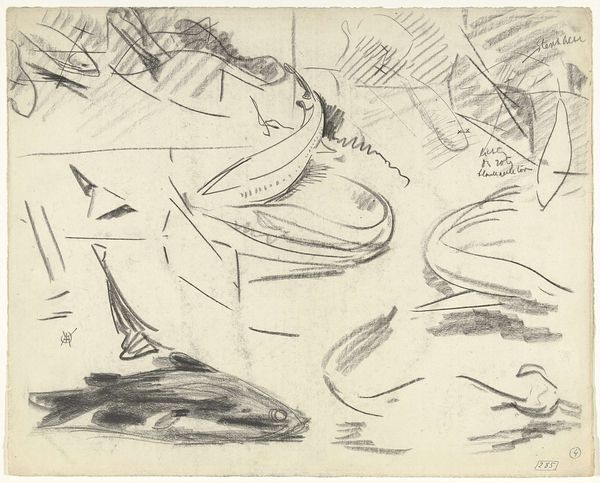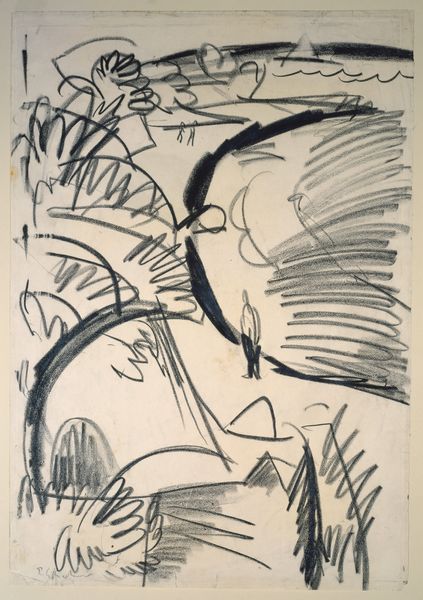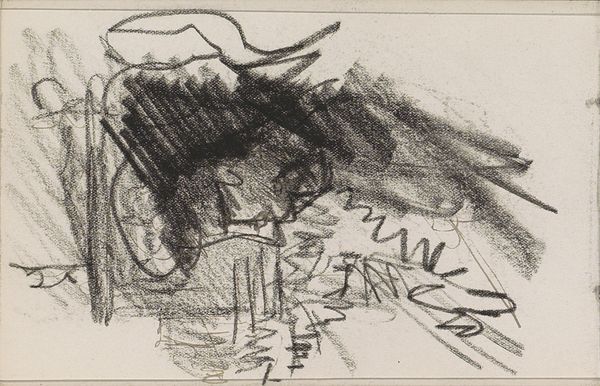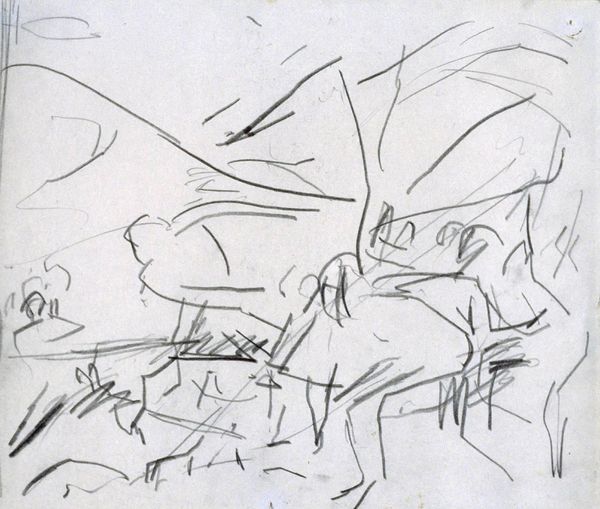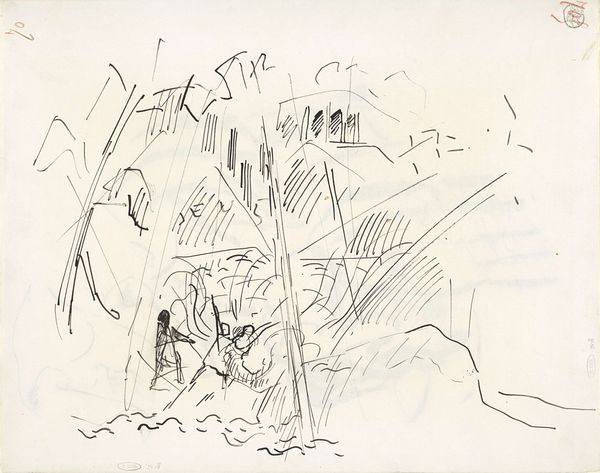
drawing, paper, ink
#
drawing
#
paper
#
abstract
#
ink
#
expressionism
Copyright: Public Domain: Artvee
Editor: This is Wassily Kandinsky's "Draft for 'Composition VII' II," created in 1913 using ink on paper. The bold black lines create such a sense of dynamism, almost chaotic energy. How do you interpret this work? Curator: This drawing, a study for one of his monumental "Composition" paintings, is fascinating in its distillation of complex emotions into pure symbolic language. Do you see how certain forms, even without direct representation, echo traditional religious imagery—the deluge, resurrection, judgement? Editor: I see what you mean, vaguely. I was more struck by just how...abstract it is! It’s hard to grasp onto any concrete image. Curator: Exactly! Kandinsky believed that abstract forms could communicate spiritual truths more directly than representational imagery. These aren't literal depictions but coded emotional triggers. Think about the emotional weight we assign to specific colors or musical chords. Editor: So, he's creating his own vocabulary of symbols, a language of feeling? Curator: Precisely. And consider the historical context. This was painted on the eve of World War I. Do you see any potential connection with widespread anxiety during that era? Editor: Yes, that chaos I mentioned seems like more than just dynamism now. It feels charged, fraught with tension. It seems like he’s found his own language to process these world events, an apocalyptic feeling through abstracted shapes. Curator: Indeed. And understanding the visual language provides us with the opportunity to decipher complex emotional responses to critical moments in our collective cultural memory. Editor: It is so amazing to learn about Kandinsky's symbols in his artwork!
Comments
No comments
Be the first to comment and join the conversation on the ultimate creative platform.
